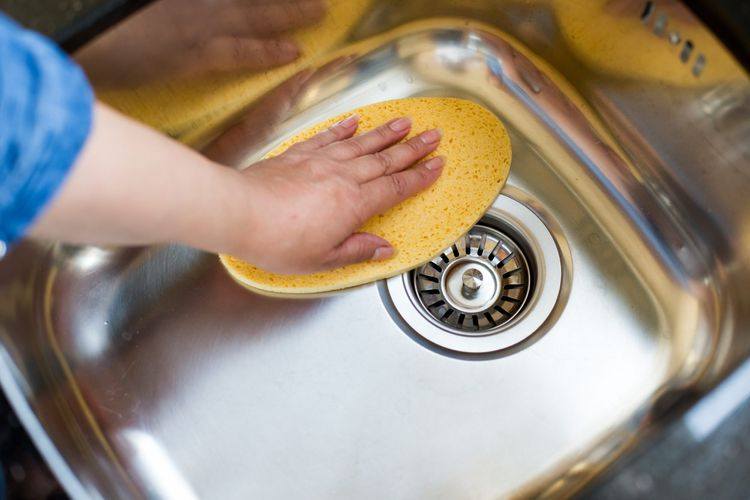It was time to move onto something heavier. Desperate stains call for desperate measures, which in this case was bleach. I carefully poured a little bleach around the rectangular sink and let it sit for about 30 minutes.
To my great surprise, the spots where the bleach had been were lighter! The sink was beginning to look white again, though it still needed a little work. Blanco’s website said a mixture of bleach and water could be used to lighten food stains on Silgranit sinks — and to clean with a little dish detergent afterward. Following this method definitely improved the look of the sink, but it still wasn’t sparkling.
In our last place, we’d had a stainless kitchen sink, and I relied heavily on Bar Keepers Friend powder to keep it shiny. But after reading the back of the canister, it seemed like it was going to be too abrasive for the composite material.
Then I eyed my can of Bon Ami, which my Southern in-laws had introduced me to when we lived with them for a few months while searching for a house during the pandemic. I sprinkled it all over the sink and let it sit for about 20 minutes, then came back armed with a fresh non-scratch scour pad. I started making little circles with it in a corner of the sink at first to ensure it wasn’t going to harm the material. To my great surprise, it was working! The final stains were coming off — and the sink was actually beginning to sparkle. After a few more minutes of work, I stepped back to admire my work. I’d managed to not only salvage our sink, but leave it looking nearly brand new.
